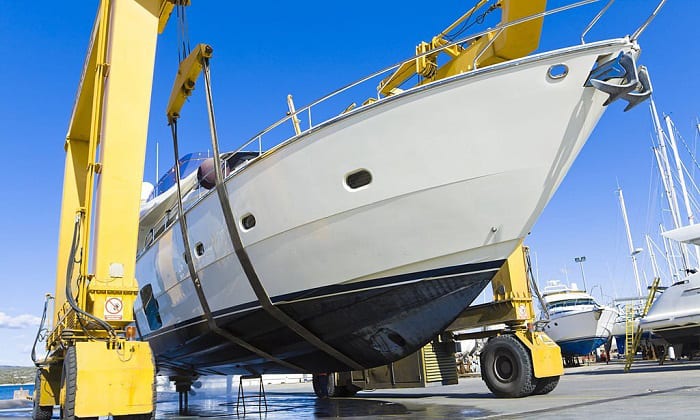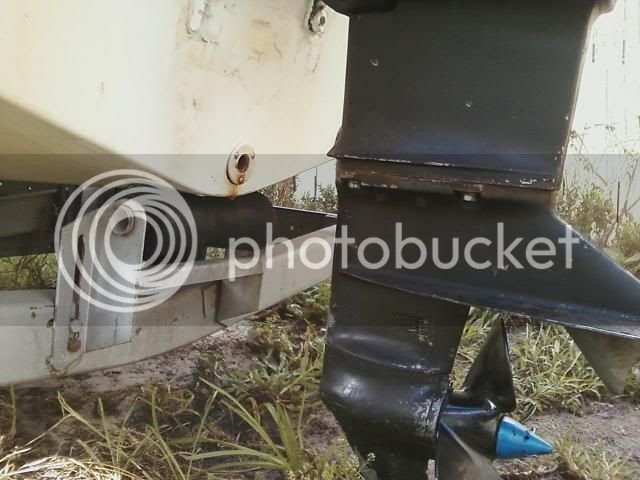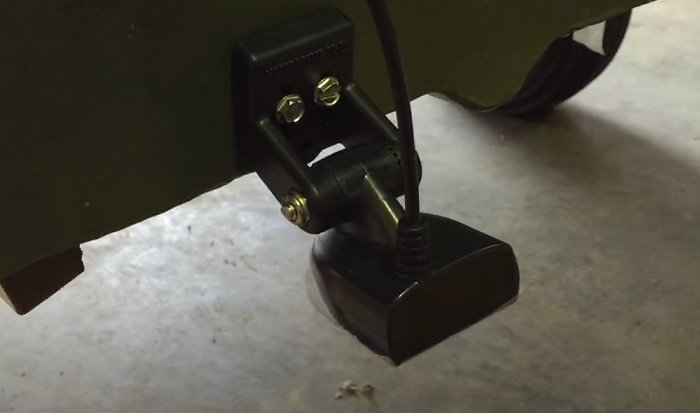How to Replace Boat Floor | Replacing a Boat’s Flooring: DIY Guide 2025
Assuming you need to replace the plywood flooring of your boat, here are 8 easy steps:
1. Remove all hardware from the area you’ll be working on and cover anything that couldn’t be removed with painters’ tape. This will protect your boat’s gel coat from any potential damage.
2. Cut out the damaged plywood with a jigsaw, making sure to stay well outside of the rotted area.
3. Measure and cut new plywood pieces to fit, then glue and screw them into place using marine-grade plywood screws every 6 inches around the perimeter and 12 inches in the field.
4. Seal all seams with epoxy, both inside and out, then allow it to dry completely before continuing.
5. Coat the entire repaired area with Fibreglass Resin, starting with a thin layer and working up to a thicker one until you have a smooth surface.
6 Allow this first layer of resin to cure for at least 24 hours before proceeding.
7 Once it has cured thoroughly, sand down any rough spots (being careful not to sand through the first layer of resin) until you have a smooth surface again.
- Remove all of the old flooring from the boat
- This may include carpet, vinyl, or other materials
- Inspect the floor for any damage and make repairs as necessary
- Choose the new flooring you would like to install
- Carpet, vinyl, and wood are all popular choices for boat floors
- Install the new flooring according to the manufacturer’s instructions
- Be sure to secure it properly so it does not come loose over time
Best Material for Boat Floor Replacement
Boat floor replacement is a common repair that boat owners face. There are many options when it comes to what material to use for your new boat floor, and it is important to choose the best option for your needs. Here is a breakdown of the most popular materials used in boat floor replacement, so you can make the best decision for your boat.
Wood: Wood is the traditional choice for boat floors and it still remains a popular option today. Pros: Wood is easy to work with and can be cut to size easily. It’s also relatively inexpensive compared to other materials.
Cons: Wood is not as durable as some other materials and it can rot if not properly sealed or maintained.
Aluminum: Aluminum is becoming a more popular choice for boat floors because it’s durable and easy to maintain. Pros: Aluminum won’t rot or mildew, and it’s easy to keep clean.
It’s also lightweight, making it ideal for boats that need to be light on their feet. Cons: Aluminum can be noisy when walked on and it may dent or scratch more easily than other materials.
Composite: Composite materials are made from a mixture of wood fibers and plastic resins.
They offer the best of both worlds in terms of durability and ease of maintenance. Pros: Composite floors won’t rot or mildew, and they’re very easy to keep clean .They’re also stain-resistant and come in a variety of colors .
Cons : Composite floors can be slippery when wet ,and they’re more expensive than wood or aluminum .
Which material you ultimately choose for your boat floor replacement will depend on your budget ,the condition of your hull ,and personal preferences . No matter which route you go ,be sure to do plenty of research so you end up with the best possible solution for your needs .
Aluminum Boat Floor Replacement
If your aluminum boat’s floor is aging or damaged, you may be considering a replacement. There are a few things to keep in mind when selecting a new floor for your boat.
Aluminum is a popular choice for boat floors because it’s durable and easy to maintain.
However, aluminum can be slippery, so if you’re replacing your old floor with an aluminum one, make sure to add nonslip coating. You’ll also want to consider the thickness of the aluminum – thicker is better when it comes to durability.
Installation is relatively straightforward, but you will need some specialized tools and knowledge to do it yourself.
If you’re not confident in your abilities, it’s best to leave this job to a professional.
Once your new floor is installed, enjoy years of trouble-free boating!
Replacing Fiberglass Boat Floor
If you are like most boat owners, you probably didn’t put much thought into the type of material used for your boat floor when you first bought it. However, over time, that flooring material can start to show its age and wear down from all the foot traffic and exposure to the elements. When it’s time to replace your fiberglass boat floor, there are a few things you should keep in mind to ensure that you choose the best possible option for your needs.
One of the most important considerations is what type of fishing or boating activities you do most often. If you fish in saltwater exclusively, then marine-grade plywood is always going to be your best bet because it can withstand constant exposure to moisture without rotting or warping. On the other hand, if you only use your boat for fresh water fishing or leisurely cruising around lakes and rivers, then treated plywood would likely suffice since it’s not as susceptible to damage from humidity and won’t break the bank.
Another factor to consider is how much weight your new floor will need to support. If you have a large fishing boat with several people on board regularly, then something like marine-grade plywood is definitely going to be stronger and more durable than treated plywood. However, if weight isn’t as big of an issue because you typically fish alone or with just one other person, then either option should work well for you.
Finally, think about what kind of look you want for your boat flooring. Marine-grade plywood tends to be cheaper but also has a more “utilitarian” appearance whereas treated plywood may be slightly more expensive but gives off a warmer vibe thanks to its natural wood grain finish. Ultimately though, it comes down to personal preference so choose whatever makes YOU happy!
Boat Floor Replacement near Me
Are you in need of a boat floor replacement? There are many companies that specialize in this type of work and can be found by searching online for “boat floor replacement near me.” When choosing a company to do the work, it is important to get multiple bids and to check references.
Once you have chosen a company, they will remove your old flooring and replace it with new marine grade plywood or fiberglass. The cost of the project will depend on the size of your boat and the materials used.
Boat Floor Replacement Cost
If you’re considering replacing the floor on your boat, you’re probably wondering how much it’s going to cost. Here’s a breakdown of what you can expect to pay for a new boat floor:
Materials: The cost of the actual materials for your new boat floor will vary depending on what type of flooring you choose.
For example, carpeting is typically less expensive than wood or vinyl plank flooring.
Labor: You’ll also need to factor in the cost of labor when budgeting for your new boat floor. If you plan to do the work yourself, you can obviously save on this expense.
However, if you hire someone to do it for you, expect to pay around $100-$200 per hour.
Total Cost: When all is said and done, most people spend between $500-$2000 on a new boat floor. Of course, this number can be higher or lower depending on the size and type of boat as well as the materials and labor costs involved.

Credit: www.bdoutdoors.com
What is the Best Material for Replacing Boat Floor?
There are a few different materials that can be used to replace a boat floor, but the best one depends on what your priorities are. If you’re looking for something that’s durable and easy to maintain, then synthetic materials like fiberglass or composite decking would be a good choice. If you’re concerned about weight, then aluminum might be the way to go.
And if you’re on a budget, plywood is always an option. Ultimately, it’s up to you to decide what’s best for your boat.
What Kind of Plywood Do I Need to Replace Boat Floor?
If you’re looking to replace the floor of your boat, you’ll need to use plywood. But not just any plywood–you’ll need marine-grade plywood. Marine-grade plywood is made with waterproof glue and treated with chemicals to resist rot and decay.
It’s also a good idea to get plywood that is pressure-treated to resist insect damage. When choosing marine-grade plywood, be sure to choose a thickness that is appropriate for the job at hand. For example, if you’re replacing floorboards, you’ll want a thinner sheet of plywood than if you’re replacing an entire deck.
What Wood to Use to Replace Boat Floor?
There are a few different types of wood that can be used to replace boat floors, but the most common is plywood. Plywood is relatively cheap, durable and easy to work with, making it a good choice for boat floors. Other options include hardwoods such as mahogany or teak, which are more expensive but also more durable.
How Do You Repair Rotted Wood in a Fiberglass Boat?
Over time, even the most well-built and well-maintained fiberglass boat can develop problems with rot. While it may seem daunting, repairing rotted wood in a fiberglass boat is actually not that difficult if you have the right tools and materials. Here are the steps you need to take to repair rotted wood in a fiberglass boat:
1. Remove all of the rotten wood from the affected area. This includes any loose or flaking pieces as well as any sawdust or debris. Be sure to work carefully and slowly so as not to damage the surrounding fiberglass.
2. Once all of the rotten wood has been removed, clean out the area with a strong household cleaner or solvent. This will help to remove any remaining dirt, grime, or residue that could potentially cause further problems down the road.
3. Next, use a marine epoxy resin to fill in any voids or holes left behind by the removal of the rotten wood.
Be sure to follow the manufacturer’s instructions carefully when mixing and applying the epoxy resin.
4. Allow the epoxy resin to cure completely before moving on to step 5.
5 Cut new pieces of wood to fit into the space where you removed the rotten wood earlier.
These new pieces should be slightly larger than the original ones so that they can be easily fitted into place and securely attached later on.
6 Securely attach each piece of new wood using marine-grade screws and/or nails . 7 Finally, apply a generous coat of waterproof sealer over top of all repaired areas .
Boat deck & floor restoration Tutorial, how to fix, mend and replace rotten plywood, fiberglass uk
Conclusion
In order to replace a boat floor, it is necessary to first remove the old flooring material and any debris. The next step is to clean and prep the area for the new flooring material. Once the area is prepped, you can install the new flooring according to the manufacturer’s instructions.
Finally, you can add any trim or finishes as desired.






